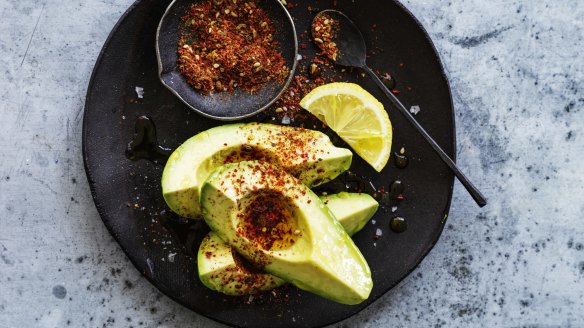The best way to store and preserve avocado

This year my avocado tree has produced an abundant crop. Is it possible to preserve avocado? P. Moore
I remember crossing the border from El Paso, Texas, into Ciudad Juarez, Mexico, some 30 years ago. I landed in a market surrounded by stalls of meat being grilled, bowls of steaming pork being pulled apart and stuffed into tortillas. On the counter of a taqueria was a colossal granite bowl filled with guacamole, garnished with whole stems of coriander and chilled by a great chunk of ice sitting in the middle of it all. It was so smooth, rich, and creamy, because the avocados were so fresh, I was told. Avocados are picked when ripe but firm. They soften once picked. Keep firm avocados on the bench at room temperature, where they will soften in a few days. To slow this process, you can keep them in the fridge for about a week. Many years after visiting that taqueria, I worked on a Mexican cookbook that contained lots of recipes for preserved meat, seafood and vegetables. Despite asking many cooks and chefs, our team never found a recipe for preserved avocado. Avocado doesn't take well to heat. It is about 10 per cent fat, and fat is not something that preserves well when wrapped up in a lot of vegetable fibre. Instead, chefs would recommend mashing a ripe avocado with a tablespoon of lemon or lime juice and freezing it in resealable bags once the air had been removed. Thaw in the fridge over several hours and use in dishes that require mashed avocado. I also learned that guacamole is only ever served at the beginning of a Mexican meal, spooned over crunchy tortilla chips rather than used as a dip or as a side for tacos – that was for the gringo tourists.
What is spatchcock? P. Morgan
Spatchcock is what you get when you take a pair of kitchen secateurs, or scissors, to a chicken and cut along either side of its backbone to remove the spine. It is placed on a bench, breast side up, and pressed to flatten out the bird. The bird is now ready for roasting or grilling. Because the bird is flat and the legs and thighs are opened out and exposed to the heat, the bird cooks evenly. Sometimes you will see the word spatchcock mistakenly used on a menu referring to a young chicken, a poussin.
Letters
We get a lot of mail here at the Brain Food Institute, some of it printable, including this one. "During the Second World War," writes P. Worswick, "when we lived in East Lothian, near Edinburgh, we couldn't get bananas. My mother would boil up some parsnips, mash them well with butter and sugar, when cool, spread the mixture on bread with a dash of jam, and tell us they were 'banana' sandwiches! As we had never tasted a banana, we knew no different. Try it, it's really quite tasty!"
Send your vexing culinary conundrums to brainfood@richardcornish.com.au or tweet to @realbrainfood.
Appears in these collections
More:
From our partners
Original URL: https://www.brisbanetimes.com.au/goodfood/the-best-way-to-store-and-preserve-avocado-20200804-h1ps5z.html
